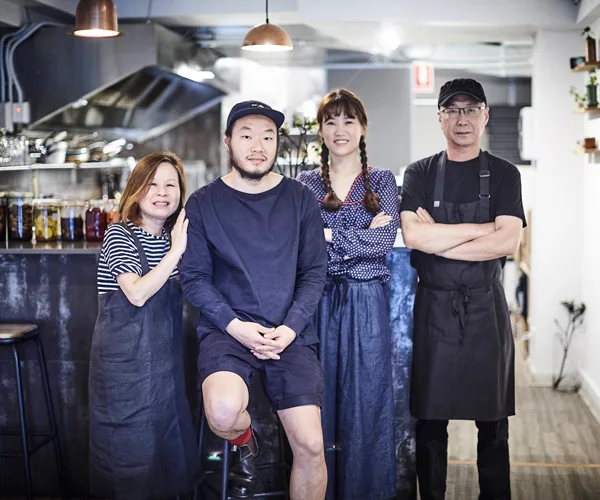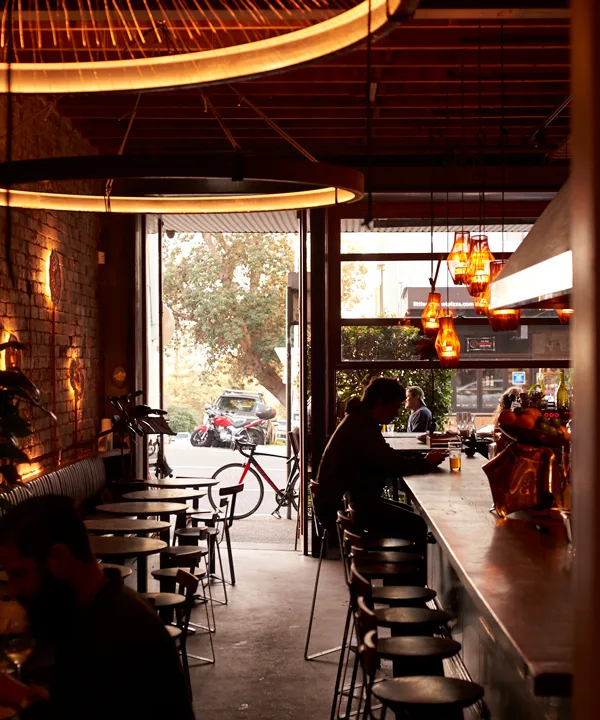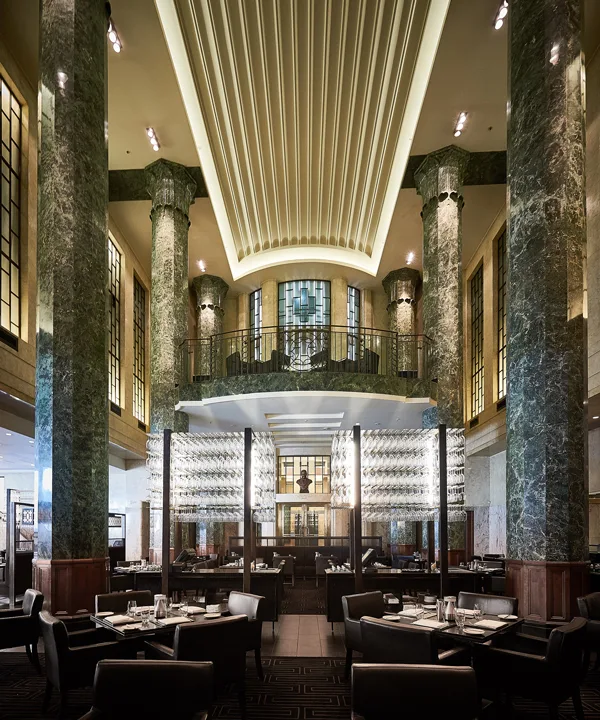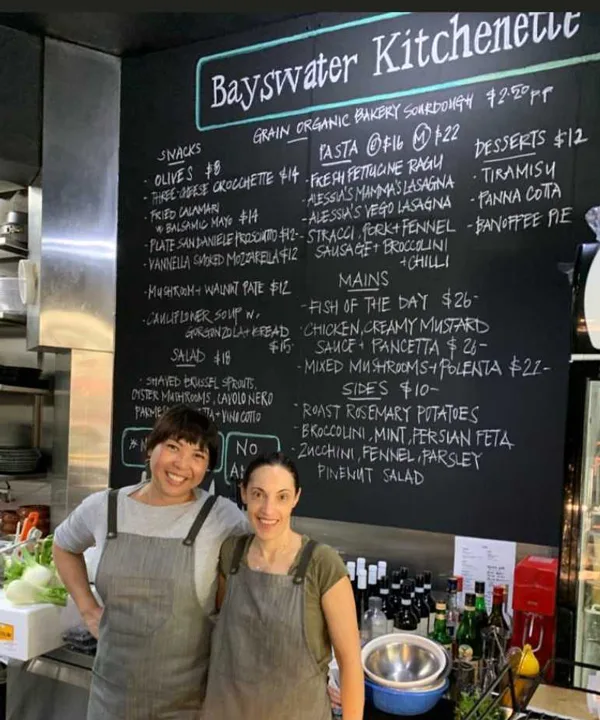Why do we feel like we’ve been here before? Last week the Federal Government announced that, after weeks of being restricted to takeaway and delivery, restaurants can reopen with up to 10 diners, and the New South Wales government signalled these changes would come into effect on Friday 15 May. Yet there’s a lingering sense of déjà vu for Sydney restaurant owners and chefs. Four square metres per diner, physical distancing between tables – these were the regulations in place way back in March as the country crept towards a nationwide lockdown.
There is no guidebook on how to navigate a restaurant through a pandemic, and no correct answer as to what to do with your business as Australia makes the white-knuckle journey down this side of the curve. Some Sydney restaurants, the larger ones, the high-end ones, have flatly decided to keep their dining rooms closed. Others, the smaller neighbourly joints, are creaking open their doors to those who are healthy – and, considering the pandemic of job losses – wealthy enough to pass through them.
Because if there’s a phrase that could capture the mood of the industry right now, it’s cautious optimism. This is not the grand reopening anyone dreamed of – who in their god’s good graces opens a restaurant in winter, the industry’s notorious business-busting season? But for some, even with limited capacity, the restaurant-half-full situation is the one they’ll take for now.

The entrance to Sáng By Mabasa.
(Photo: Will Horner)“It feels like within the space of two months we’ve been forced to open three different restaurants, and been given a week to open each one,” says Kenny Yong Soo Son. The manager of Surry Hills’ Sáng by Mabasa is reopening the dining room today with mixed emotions. There’s relief the country is easing its way out of the health crisis, but there’s also a gnawing uncertainty about the future, the same feeling that’s shadowed the business since lockdown. “We’re very excited that Australia has been shaping up better. And the normality of people dining in, that’s getting closer. But at the same time, that process is pretty scary. We don’t know what to expect,” says Son.
Since March, the family-owned Korean restaurant has done it all. You want to talk pivoting? They’ve pedalled as hard as they can, in the literal sense. Son has been doing home-deliveries via bicycle, in addition to the restaurant’s takeaway menu and take-home frozen packs of kimchi jjigae [spiced Korean stew] and mandu, complete with stylised how-to-prepare at-home video instructions. Trade has been okay, enough to keep the business afloat in March and April. But as the public has stopped panic-buying and started visiting friends and families in socially permissible groups, there’s been a noticeable slowdown in business.
For the Sáng by Mabasa family – Son, wife Youmee Jeon, his mother Jin Sun Son and father Seung Kee Son – there was no other choice but to reopen.
Pre-COVID-19, they could pack 25 diners in the small dining room at any one time. Under the current rules, they can seat just seven customers, less than a third of their regular capacity. Diners must book ahead for one of two evening sittings, with a maximum of four diners allowed per group. À la carte will give way to two set menus; those paper menus will be single-use. “It’s about finding a clever, smart and safe way to stay open in this new system. That’s the challenge,” he says. He’s not talking about making money. He’s talking about keeping the family restaurant alive.

{From left) Sáng By Mabasa co-owners Jin Sun Son, Kenny Yong Soo Son, Youmee Jeon and Seung Kee Son.
(Photo: Will Horner)Ode Bar isn’t taking any chances. To secure a seat at the Bondi wine bar, diners, in groups of 10, must book out the whole venue. “I don’t want to have to be the 10-people police,” says manager Jerome Wallcroft. When social-distancing in hospitality venues first came into play in March, it was difficult to enforce the rules, “especially when people had a few drinks.” An $80 per person set menu, excluding drinks, is on offer. It’s their best and most efficient way to guarantee minimum takings for a night’s work. “If we’re only honest with ourselves, opening for 10 people is not going to be lucrative, but it’s going to keep us afloat a little bit longer,” says Wallcroft. “This is more of a chance to swim for the next life raft rather than make waves.”

Ode wine bar, Bondi.
(Photo: Supplied)For Glenda Lau, she can’t wait to welcome back diners, even if the rules only allow them to come by the trickle. Her restaurant’s name – Bayswater Kitchenette – gives an indication of its smallness. Since opening 11 months ago, Lau and co-owner Alessia Bottini have established their pocket-sized Rushcutters Bay restaurant as a neighbourly hub of good food and wine, with patrons crammed at jigsawed-in wooden tables or at the highly coveted counter with views into the tiny kitchen. At maximum capacity, it can fit 16. With the current restrictions, it can responsibly accommodate eight diners.
Lau and Bottini have operated throughout the crisis, opening six days a week for takeaway and take-home meals, staffed by just the two of them. The decision to stay open was driven by community need. “There are people [in this suburb] who live on their own and we’re the only people they see that day,” says Lau. She’s made up packs of lasagne for customers with immuno-compromised conditions who would arrive at the restaurant fully kitted out in gloves and masks; she’s cooked takeaway for a couple who live around the corner in an apartment with no stove, no microwave (they deliberately ripped out their kitchen during renovations). Another couple has come brandishing a spreadsheet of the local eateries they support day by day – Bayswater Kitchenette is their “Friday” restaurant.
But takeaway can never replace the dine-in experience, both in terms of cash and community. Diners drop about $50 per head and hours of banter; takeaway customers spend $15 and five minutes of chitchat. The 10-diners proposition is no lifesaver, says Lau, but it’s an improvement. “Ten people is better than the current takeaway situation, and all our locals are desperate to be here.” Customers have been asking after Robert Patterson-Hyde, their charismatic front-of-house manager, who’s been MIA from the restaurant during lockdown. He’ll report for duty on Friday when Baywater Kitchenette reopens.

The tiny dining room at Bayswater Kitchenette.
(Photo: Supplied)There are certainly no winners from the crisis, but the current relaxations appear to work better for smaller casual eateries than larger establishments or fine-dining restaurants. “We’re lucky we’re small – even 10 people will make it look full, and we can still have a good atmosphere,” says Lau. She feels for those running medium-to-large restaurants. “I understand [restricting restaurants to 10 diners] has to be done for the safety of the community, but it’s not a great start.”
“It’s a nice change, it’s a nice first step, but there’s no commercial reality around it,” says Neil Perry, ambassador of Rockpool Dining Group. The group counts some 43 venues in its Sydney portfolio, of which most have capacity in the triple digits. Its flagship restaurant Rockpool Bar & Grill can fit around 220 people in one sitting. The thought of opening the high-ceilinged Art Deco dining room for 10 people is darkly comic; 20 patrons, as outlined in stage two of the Federal Government’s social-distancing relaxations, is not much better. The group is likely to hold off opening its restaurants until July, when stage three has been slated to take effect nationwide, and gatherings of up to 100 people allowed. Even then, Rockpool Bar & Grill will be making nowhere near its pre-COVID returns.
Once upon a time, Stanmore’s Sixpenny only offered single-sitting degustations during its dinner service. To do the same for a handful of diners is simply not feasible, says chef-owner Dan Puskas. “It was a quick decision to make. We’ve got to do three times that to survive.” The restaurant has since transitioned to elegant take-home dinners for two, and holds popular bake sales on the weekend. The new model has been enough to keep all its kitchen and front-of-house staff employed. “Everyone’s different, but for us to make a viable business and keep paying our staff, that’s the biggest thing right now, and we’re doing that well.”

The grand dining room at Rockpool Bar & Grill.
(Photo: David Griffen)So what now? From today, Bayswater Kitchenette, Ode and Sáng By Mabasa will be operating at their maximum allowable capacity for the next several weeks. Stage two of the Federal Government’s three-step plan to ease restrictions may allow 20 diners, but the surface area of their floorplans do not. They’re not under any illusion they’ll turn a profit. “From the beginning, when [COVID-19] hit, it’s never been about money. It’s been about how do we survive, and how do we still do this without going against the rules and regulations and our ethics,” says Son. But the alternative – not opening – means they’ll miss that critical window to trial their operations under the current world order. Plus, it’s what the people want.
“There are a lot more people who are willing to dine out then there are people who are afraid,” says Son. “Everyone misses that – it’s that human intimacy, that vibe, that liveliness.” Sáng by Mabasa announced its reopening plans on Wednesday; by Thursday the weekend’s sittings were fully booked. Ode is booked out tonight and Saturday too.

Bayswater Kitchenette chefs and co-owners Glenda Lau and Alessia Bottini.
(Photo: Supplied)Absence may make the heart grow fonder, and it also leads to important epiphanies. “We play more of a part in society and community than people realise. We’re not just places to eat,” says Lau. She’s lived in Rushcutters Bay for 16 years, currently residing across the street from the restaurant, and knew the neighbours well before they became her customers. She describes the restaurant’s location as a “unicorn” corner spot, located just far enough away from the madness of the Kings Cross district, but still with enough foot traffic from passing locals. Lau and Bottini opened Bayswater Kitchenette in June 2019, and they’re not giving it up without a fight. “Don’t forget this is our first year of business,” says Lau. “If we can get through this, we can get through anything.”


.jpg?resize=380%2C285)